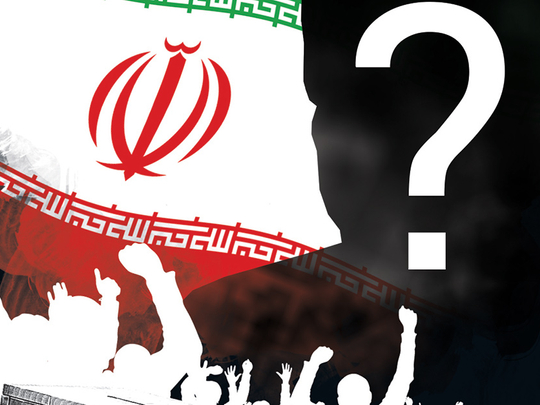
Presidential elections in Iran raise a puzzling contradiction: How can the government include both an unelected supreme leader and a president who is chosen through votes that are treated as serious contests? Put another way, is Iran a democracy or a dictatorship?
Citizens elect the president, as they will today, as well as members of a legislature. But they are overseen by institutions staffed by clerics. One, known as the Guardian Council, approves all candidates for office, narrowing the scope of elections. Still other unelected bodies, like the Revolutionary Guards, wield tremendous power. The supreme leader, who holds the position for life, is the most important figure, overseeing everything.
The system began with a series of hurried political compromises amid the country’s 1979 revolution. The end result was an Islamic republic, meant to combine democratic involvement with theocratic oversight. In practice, the two often clash, with unelected, unaccountable officials holding the most power.
The result has been 38 years of weak democracy but strong politics. Political factions, each with a base of support, compete through elections, and for influence among powerful bureaucracies. Over the years, although the government has remained broadly authoritarian, it has oscillated among degrees of democracy. Those fluctuations, while subtle, have often coincided with elections like Friday’s. After throwing off their government in 1979, Iranians chose its replacement with a referendum measure whose wording would prove fatefully vague: Should the old system be replaced with an Islamic republic?
The measure, seen as a vote on the revolution itself rather than whatever would follow, was overwhelmingly approved. A second referendum was scheduled to approve a constitution. But the revolution was not united. It was led by three factions: Nationalists who sought a western-style republic, Islamists who favoured a sort of populist theocracy and Communists, the most powerful group.
Ayatollah Ruhollah Khomeini, the Islamists’ leader, conspired with nationalists to block the Communists, whom they both feared. They agreed on establishing an Islamic republic, which theoretically would satisfy both Islamists and nationalists. An organisational chart of Iran’s institutions looks like two complete systems, one democratic and another theocratic, mashed together.
Mohammad Ayatollahi Tabaar, a professor at Texas A&M University who studies Iranian politics, said that Khomeini and his allies hoped the two systems would clash. Tabaar called the theocratic institutions “a complete counter-state” that Khomeini and his allies “thought eventually would absorb the state”. Khomeini seemed to anticipate a gradual takeover. He took office in the holy city of Qom rather than Tehran, the capital, and warned clerical leaders against sullying themselves with day-to-day politics. But in 1980, just months after the new constitution was approved, Saddam Hussain, the then president of Iraq, invaded Iran. The war, which lasted eight years, led Iranians to seek out a strong national leader. It also threatened to break the fractious new government. Khomeini consolidated power for himself. His office, conceived of as a distant religious authority to be consulted only on certain matters, came to dominate the political system outright.
When Khomeini died in 1989, a year after the war ended, it threw the system that had consolidated around him into doubt. His allies feared that the office of supreme leader would be weakened with his death, shifting power to elected officials. They rushed through Ayatollah Ali Khamenei, who was then the president, to become the new Supreme Leader, an office he still holds. But Khamenei was far weaker than his predecessor. Unable to control the factions, he sought to manage them and at times swayed to their will.
Ever since, these factions have struggled against one another, at times in ways that alter the system itself. In 1997, for instance, the reformist Mohammad Khatami won the presidency, despite efforts by Khamenei to shut down his campaign. Khatami replaced the heads of powerful security services, traditionally run by hard-liners, allowing him to ease political restrictions. During elections in 2004, Khamenei and his allies barred hundreds of reformist candidates, devastating their faction and returning power to his hard-liners. This represented a period of consolidation for Khamenei, who also clashed with a powerful ally-turned-rival, Akbar Hashemi Rafsanjani. Once a political kingmaker and a former president, Rafanjani was gradually sidelined as Khamenei strengthened his control.
Often, simple power politics, not ideological differences, drives these fights. Throughout 2011, President Mahmoud Ahmadinejad, though a hard-liner, clashed with the supreme leader as he sought to strengthen the presidency.
The country’s elections may be just another venue in which factions can compete, but they can still give citizens a voice, albeit one much weaker than in full democracies. “These are real elections with real political actors and real campaigning,” Tabaar said. Their scope, however, is sharply limited by the Guardian Council, which is considered to be aligned with Khamenei, blocking all candidates who stray too far from the council’s preferences.
The system relies on elections that will be too restrictive to risk substantial change but open enough that Iranians, who expect a say, will accept their government as legitimate. That would be difficult enough even if it were set out in law. But because it is a matter of tacit understanding, reached between disparate institutions that do not agree on the optimal level of democracy, in practice it can bring severe instability.
Khatami’s election, for instance, was followed by years of chaotic infighting. In 2009, when Ahmadinejad won re-election amid accusations of fraud, widespread protests briefly threatened to bring down the government.
Four years later, the system functioned more as intended. Hassan Rouhani, a moderate who was promising change but not so much as to provoke the system’s wrath, won the presidency. Rouhani is running for re-election. His most serious challenger, Ebrahim Raisi, is a hard-liner and former attorney general widely thought to be Khamenei’s preferred candidate.
— New York Times News Service
Max Fisher writes The Interpreter, a news column and newsletter that explore the ideas and context behind major world events.








